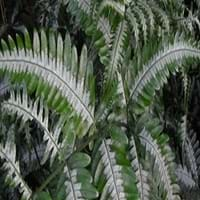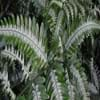Life Span
Perennial
Perennial
Type
Fern
Flowering Plants
Origin
Central America, South America, Eastern Africa, Middle Africa, Southern Asia, Southeastern Asia
Italy, Southern Europe, western Balkans
Types
Pteris aberrans, Pteris abyssinica, Pteris actiniopteroides
not available
Number of Varieties
Not Available
Habitat
Subtropical climates, Subtropical forests, Tropical regions
Islands, Not Available
USDA Hardiness Zone
10-11
7-10
Sunset Zone
H1, H2, 24
21,22
Habit
Clump-Forming
Upright/Erect
Flower Color
Not Available
Lavender, Light Blue, White
Flower Color Modifier
Bicolor
Bicolor
Fruit Color
Not Available
Non Fruiting Plant
Leaf Color in Spring
White, Green, Silver
Green, Light Green
Leaf Color in Summer
White, Green, Silver
Green, Light Green
Leaf Color in Fall
White, Green, Silver
Green, Light Green
Leaf Color in Winter
White, Green, Silver
Light Green
Leaf Shape
Pinnate
Compound
Plant Season
Spring, Summer, Fall, Winter
Summer, Fall
Sunlight
Full Shade, Partial shade
Full Sun, Partial Sun
Growth Rate
Medium
Medium
Type of Soil
Loam, Sand
Loam
The pH of Soil
Acidic, Neutral
Acidic, Neutral
Soil Drainage
Average
Average
Bloom Time
Not Available
Early Summer, Summer, Late Summer
Tolerances
Not Available
Heat Tolerance
Where to Plant?
Container, Ground, Pot
Ground, Pot
How to Plant?
By dividing rhizomes, tubers, Spores
From bulbs, Seedlings, Stem Planting
Plant Maintenance
Medium
Low
Watering Requirements
Average Water Needs
Average Water Needs, Do Not over Water, Never Over-water, Requires regular watering
In Summer
Lots of watering
Lots of watering
In Spring
Moderate
Moderate
In Winter
Average Water
Average Water
Soil pH
Acidic, Neutral
Acidic, Neutral
Soil Type
Loam, Sand
Loam
Soil Drainage Capacity
Average
Average
Sun Exposure
Full Shade, Partial shade
Full Sun, Partial Sun
Pruning
Remove damaged leaves, Remove dead branches, Remove dead leaves, Remove dead or diseased plant parts
Remove damaged leaves, Remove dead branches, Remove dead leaves, Remove dead or diseased plant parts
Fertilizers
All-Purpose Liquid Fertilizer
fertilize every 2-3 weeks while growing, fertilize in growing season
Pests and Diseases
Red blotch
fungus
Plant Tolerance
Not Available
Drought, Heat Tolerance
Flower Petal Number
Single
Single
Showy Foliage
Yes
Not Available
Foliage Texture
Fine
Not Available
Foliage Sheen
Matte
Not Available
Attracts
Bees, Birds, Butterflies
Birds, Insects
Allergy
Not Available
Toxic
Aesthetic Uses
Hanging Basket, Showy Purposes
Beautification, Landscape Designing, Showy Purposes
Beauty Benefits
Not Available
Not Available
Edible Uses
Insignificant
No
Environmental Uses
Air purification
Air purification
Medicinal Uses
Not Available
Asthma, Cough, Unknown
Part of Plant Used
Not Available
Flowers, Leaves
Other Uses
Showy Purposes
Decoration Purposes, Showy Purposes, Used as Ornamental plant
Used As Indoor Plant
No
Yes
Used As Outdoor Plant
Yes
Yes
Garden Design
Container, Feature Plant, Groundcover, Houseplant, Mixed Border, Tropical
Mixed Border, Wildflower
Botanical Name
PTERIS argyraea
CAMPANULA pyramidalis
Common Name
Brake Fern
Chimney Bellflower
In Hindi
Brake Fern Plant
Chimney Bellflower
In German
Brems Farnanlage
Schornstein Glockenblume
In French
Brake Fern Plante
cheminée Bellflower
In Spanish
Planta del helecho del freno
Chimenea Bellflower
In Greek
Φρένο Fern Plant
καμινάδα καμπανούλα
In Portuguese
Brake Planta Fern
chaminé Bellflower
In Polish
Hamulec Fern roślin
komin Bellflower
In Latin
Fregit Fern Plant Families
caminorum purgatores Bellflower
Phylum
Tracheophyta
Tracheophyta
Class
Polypodiopsida
Magnoliopsida
Order
Polypodiales
Asterales
Family
Pteridaceae
Campanulaceae
Clade
Not Available
Angiosperms, Asterids, Eudicots
Tribe
Not Available
Not Available
Subfamily
Pteridoideae
Not Available
Number of Species
Not Available
Difference Between Brake Fern and Chimney Bellflower
If you are confused whether Brake Fern or Chimney Bellflower are same, here are some features about those plants to help you choose better. Many people think that these two plants have the same characteristics, but one can see Brake Fern and Chimney Bellflower Information and learn more about it. Fertilizers required for proper growth of Brake Fern are All-Purpose Liquid Fertilizer, whereas for Chimney Bellflower fertilizers required are fertilize every 2-3 weeks while growing and fertilize in growing season. Hence, one should know the basic difference between Brake Fern and Chimney Bellflower if you are planning to have them in your garden to enhance its beauty.
<
Flowering PlantsImportance of Brake Fern and Chimney Bellflower
Want to have the most appropriate plant for your garden? You might want to know the importance of Brake Fern and Chimney Bellflower. Basically, these two plants vary in many aspects. Compare Brake Fern and Chimney Bellflower as they differ in many characteristics such as their life, care, benefits, facts, etc. Every gardener must at least have the slightest clue about the plants he wants to plant in his garden. Compare their benefits, which differ in many ways like facts and uses. The medicinal use of Brake Fern is Not Available whereas of Chimney Bellflower is Asthma, Cough and Unknown. Brake Fern has beauty benefits as follows: Not Available while Chimney Bellflower has beauty benefits as follows: Not Available.
Compare Facts of Brake Fern vs Chimney Bellflower
How to choose the best garden plant for your garden depending upon its facts? Here garden plant comparison will help you to solve this query. Compare the facts of Brake Fern vs Chimney Bellflower and know which one to choose. As garden plants have benefits and other uses, allergy is also a major drawback of plants for some people. Allergic reactions of Brake Fern are Not Available whereas of Chimney Bellflower have Toxic respectively. Having a fruit bearing plant in your garden can be a plus point of your garden. Brake Fern has no showy fruits and Chimney Bellflower has no showy fruits. Also Brake Fern is not flowering and Chimney Bellflower is not flowering . You can compare Brake Fern and Chimney Bellflower facts and facts of other plants too.



